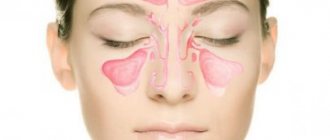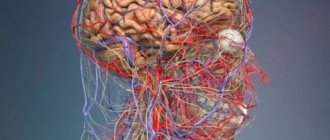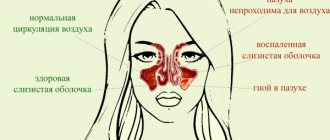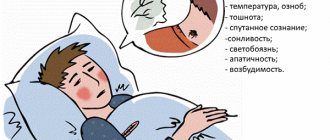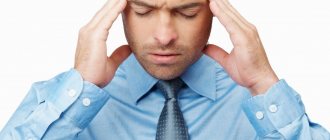Every person has experienced symptoms at least once in his life - headache and nausea, less often they are accompanied by chills.
There can be many explanations for such a deterioration in the condition - from banal overwork and lack of sleep, to the onset of inflammatory manifestations in the body. Nature created man as a single, complexly organized system, in which a disorder in the activity of one structure can affect all the others.
Previously uncharacteristic dizziness, severe pain in the head, vomiting can be ominous signs of the onset of neurological diseases, pathologies of an infectious or bacterial nature. Therefore, it is not recommended to delay consultation with a specialist.
Features of symptoms
It is the headache that poses the greatest danger, because... it often appears in people against the background of the development of serious illnesses. All unpleasant painful sensations spread along the nerve endings, going to separate parts of the brain, from where they are transmitted to human perception. Pain receptors that detect any irritation are located in the following parts of the head:
- Periosteum;
- Subcutaneous tissue;
- Eyes;
- Vienna;
- Arteries;
- Muscles;
- Nerves;
- Mucous membrane;
- Nasal sinuses.
Other parts of the head (bones, vascular plexuses, brain nerve tissue) are not susceptible to any pain, because do not have corresponding receptors.
Description of attacks
Headaches can manifest themselves in different ways. A detailed description of the patient’s sensations allows the doctor to immediately determine what diseases could cause discomfort in the head with nausea. The main criteria for describing pain are:
- Frequency of attacks.
- The connection between the occurrence of the problem and a certain time of day.
- Pain intensity, localization, influence of external factors.
- Does good sleep help get rid of feelings?
- Does pain with nausea go away after vomiting?
- Are there any other symptoms?
You need to pay attention and remember all the features of the symptoms before going to the doctor, because At the hospital you will need to tell us about your condition in as much detail as possible.
Cephalgia is the scientific name for headache. It is divided into several types: neuralgic, tension pain, vascular, liquorodynamic, infectious-toxic.
Vascular pathologies
Medical static data indicate a significant annual increase in the number of people suffering from fluctuations in blood pressure - hypertension.
Characteristic symptoms of the disease are headache, usually localized in the occipital and temporal regions, nausea, vomiting, swelling in the legs, severe weakness in the body, chills: during a crisis.
Congenital or acquired vascular pathologies - aneurysms and malformations - occur hidden. They make themselves felt already at the moment of an intracranial catastrophe - a stroke - a person suddenly loses consciousness, falls, and develops various paresis and paralysis. In severe cases, death occurs.
Inflammatory manifestations in the vascular walls - arteritis, will also be characterized by an increase in temperature, a person develops a headache, uncontrollable vomiting, and chills in the body.
Main reasons
In most cases, headaches with a feeling of nausea appear with one-time or constant exposure to the external environment, natural changes in the body and minor health problems. All this does not require urgent treatment, and sometimes even goes away on its own without taking any medications. There are many reasons for the occurrence of such a condition.
Overwork
After extreme physical or mental stress, pain in the back of the head may appear, which is accompanied by mild nausea. Sometimes pain affects the temple or neck. They are pulsating or aching in nature, accompany a person all day and intensify in the evening. Symptoms especially often appear during severe mental stress towards the end of the working day.

Lack of sleep
With regular lack of sleep, the human body does not have time to rest, which is why more and more fatigue gradually accumulates. After some time, dizziness, pain inside the head, and other unpleasant symptoms appear. They all intensify as night approaches.
Poor nutrition
With an incorrect diet, a person does not receive all the necessary minerals and vitamins, and instead of them, the body is saturated with harmful substances that have a negative impact on well-being. Those who like to eat in fast food cafes and girls who exhaust themselves with strict diets can encounter this. Headaches with nausea are also accompanied by dizziness, decreased quality of memory and performance, abdominal pain, heartburn, and increased gas production.
Food poisoning
When eating low-quality or spoiled food, the body becomes intoxicated. Poisoning makes itself felt a few hours after eating, and the person’s condition worsens for several days. Such intoxication may be accompanied by severe vomiting, weakness, diarrhea, dizziness, and high body temperature. In severe cases, hospitalization may be required.
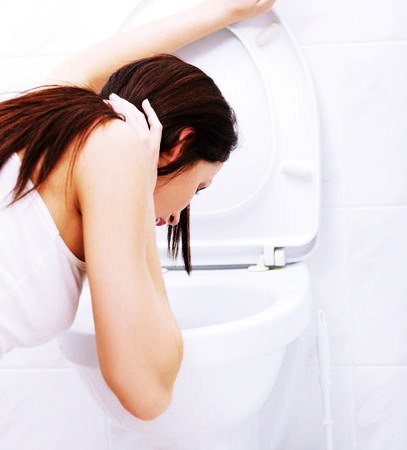
Bad habits
Smoking and regular alcohol consumption cause a significant deterioration in health after just a couple of weeks of presence in a person’s life. After a one-time drinking session, you may experience an unpleasant hangover, which causes weakness, nausea, depressed mood, and dry mouth. If you go on a binge and drink every day, the symptoms will weaken, but your health will suffer much more, and the person will constantly shiver. The worst thing for the body is the consumption of vodka and stronger drinks.
Preventative measures
Prevention is no less important than treatment, since it not only alleviates the course of the disease, but also prevents the occurrence of unpleasant symptoms.
Proper nutrition
Headache may be a concern due to frequent consumption of foods that contain caffeine (tea, coffee, carbonated drinks), monosodium glutamate (convenience foods, breakfast cereals), nitrites (sausage, ham, sausages). All these substances, entering the blood, have a very negative effect on the blood vessels, they begin to narrow and expand intensively. Therefore, it is worth eliminating harmful foods from your diet and sticking to a healthy diet.
Physiotherapy
Regular physical exercise increases muscle tone, improves blood circulation and the general condition of the body. They can be combined with physiotherapeutic procedures and acupuncture.
Massage
The massage will relieve tension and spasms that occur in the muscles, and will also relax the entire body. There will be a greater effect if you massage not only the collar area, but the whole body. Over time, the pain will become less frequent, and in some cases will stop altogether. You can massage yourself on some areas of the head or massage special points, for example, at the back at the base of the skull in the recess between the two vertical muscles of the cervical spine, at the junction of the bridge of the nose and eyebrows, immediately at the beginning of the cheekbone along the vertical line of the pupil. This also makes the condition easier.
Relaxing baths
Every 2-3 days you can take baths with herbs or essential oils; chamomile, valerian, mint, and lavender are good for relieving weakness and headaches. They have a beneficial effect on the general condition of the body.
Causes associated with serious illnesses
There are other reasons why such unpleasant symptoms appear. They are associated with the development of dangerous diseases. If signs of their appearance are detected, you should immediately consult a doctor and undergo diagnostics to begin treatment. Delay in such cases can lead to serious complications and even death. What can cause headaches with nausea?
Pinched nerve
Pinching occurs in the cervical spine. It causes problems with blood circulation, which further worsens a person’s well-being. The pain is accompanied by dizziness, nausea, tingling of the upper extremities, and decreased performance. They are shooting, piercing, burning or tearing in nature. In severe cases, speech problems and paralysis may occur.
Brain tumor
People who have begun to develop a tumor in the brain complain of mild attacks of nausea, combined with dizziness, headache and weakness. Gradually the patient's condition will worsen. In some cases, problems with hearing, vision or speech appear. If the tumor size is critical, death is possible.
High blood pressure
A huge number of people suffer from hypertension. It manifests itself in the form of constantly elevated blood pressure and is accompanied by nausea, throbbing pain inside the head, radiating to the back of the head and each temple, numbness of the fingers, weakness, rapid heartbeat, blocked ears, and a feeling of fear. Hypertension can lead to a hypertensive crisis, which causes pain inside the chest, cramps, vomiting and confusion.
Increased intracranial pressure
This pathology occurs in adults due to infections, strokes or tumors. Sometimes it can be congenital, which is observed in a child at an early age. Patients experience intense headaches, nausea, sweating, decreased visual acuity, and they can see very blurred, and also have noticeable bags under the eyes. Often this problem leads to disturbances in brain activity.
Traumatic brain injuries
As a rule, it is men who experience head injuries. A slight blow can cause a full range of unpleasant symptoms, and sometimes even seizures, memory loss and disruption of visual or auditory function. Impacts of great force carry a risk of death. Therefore, it is very important to provide first aid to the victim in a timely manner.
Hypothyroidism
One of the most common thyroid dysfunctions is hypothyroidism. It appears when there is a lack of hormones or a decrease in their biological effectiveness. It is not possible to detect the disease immediately, which complicates future treatment. It can manifest itself as a deterioration in the patient’s appearance, pain inside the head and muscles, decreased brain activity, bad mood, and insomnia.
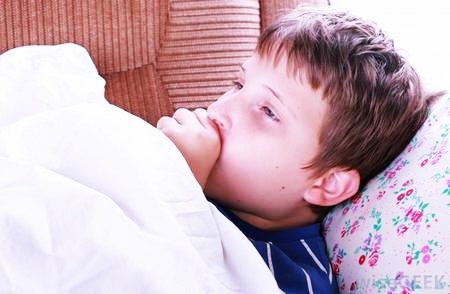
Ophthalmic diseases
A common cause of painful sensations inside the head, which causes nausea, is problems with the visual apparatus. Almost every serious illness can cause such symptoms. However, any of them can increase blood pressure, cause dizziness, severe lacrimation and weakness.
Gastroenteritis
This illness is called stomach flu. It is a virus that manifests itself in the same way as food poisoning. Distinctive symptoms appear only after a couple of days. Among them: sore throat, redness of the eyes, sharp pains inside the abdomen, yellow stool, chills. Anyone can get it, but gastroenteritis poses the greatest danger to older people and children.
Vertigo or floating in space

Dizziness, or vertigo, can always surprise a person with its manifestation. Suddenly, everything sways before your eyes, the floor “rises”... There is a feeling as if the body is floating in space, there is a feeling of instability in movement. If at the same time there is a headache or a feeling of pressure in the head, tinnitus, weakness, nausea or vomiting and sweating, this is a very irritating situation that can lead to exhaustion of the body. If there is tingling and/or weakness in the limbs, double vision or darkening of the eyes, the person may fall. Symptoms are subjective and the patient may not always understand them correctly. Why does dizziness occur, which is accompanied by headache, weakness and even nausea, and what to do in such a situation?
First aid, diagnostics
If pain occurs, you need to understand what exactly to do to make it easier, and also know what examinations to prepare for. This information can help speed up the search for the root cause of unpleasant symptoms and the treatment itself.
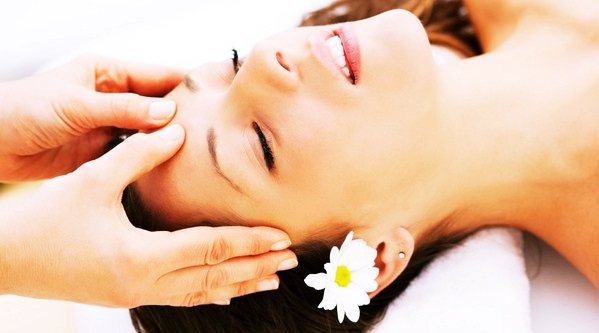
First aid
If you have a headache and nausea, you need to follow a number of simple steps that will help alleviate the condition in a short time. It is recommended to perform them in the specified sequence. What do we have to do:
- Get rid of all irritants (loud sound, bright light, strong smell).
- Take painkillers.
- Lie down and relax. Breathe calmly, massage your head.
- Drink a cup of green tea.
- Open the window to get some fresh air.
You should only take painkillers in cases where the pain seems unbearable.
Diagnostics
It is imperative to consult a doctor if pain with nausea has become regular, is accompanied by other symptoms, or there is reasonable suspicion of the development of dangerous diseases. The doctor will conduct a survey and prescribe all the necessary examinations. As a rule, the patient is sent to:
- Blood and urine tests.
- CT, MRI.
- Angiography.
- Pressure monitoring.
In some cases, additional examinations may be prescribed or the patient may be referred to other specialists.
What to do?
Elimination of the symptoms of nausea and chills is associated with the treatment of a specific condition or disease that causes them. For this purpose, medical and folk remedies are used, as well as a special diet and nutrition correction.
Medicines
Depending on the nature of nausea and chills, the doctor may prescribe the following medications to eliminate them:
- Loperamide. Used to treat diarrhea of various nature, including emotional. Eliminates the root cause of nausea and chills in gastrointestinal disorders. Contraindicated in cases of hypersensitivity, dysentery, diverticulosis and conditions associated with intestinal obstruction and inhibition of peristalsis, under the age of 6 years. Price 11-55 rub.
- Regidron. A product for restoring water and electrolyte balance, correcting acidosis and energy balance during intense physical activity. Eliminates nausea and vomiting during intoxication. Contraindicated in cases of hypersensitivity, liver and kidney diseases, diabetes mellitus, intestinal obstruction, unconsciousness of the patient and hypotension. Price 390-410 rub.
- Diprazine. An antihistamine that calms the nervous system, enhances the effect of local painkillers, lowers body temperature and eliminates nausea. Contraindicated in drinking alcohol, impaired kidney and liver function, driving a car or operating complex mechanisms that require increased attention. Price 780-1450 rub.
- Paracetamol. Intended for use for pain of various origins, chills, fever, infectious and inflammatory diseases. Contraindicated in case of hypersensitivity, alcoholism, anemia, severe liver or kidney dysfunction, in the first trimester of pregnancy. Price 6-75 rub.
- Balm “Star”. Helps relax muscles and normalize blood flow, eliminates symptoms of infectious respiratory diseases and psycho-emotional disorders, relieves headaches and chills, and eliminates the feeling of nausea. Contraindicated in case of individual intolerance to the drug. It is recommended to conduct a susceptibility test before use. Price 60-220 rub.
Traditional treatment
The use of folk remedies can effectively relieve symptoms of chills and nausea. But before using them, be sure to consult with your doctor. For this purpose, the following traditional methods of treatment are used:
- Warm the body with warm clothes and periodically drink hot tea containing raspberries and lemon, which reduces the feeling of nausea. If there is no fever, it is recommended to take a warm bath or steam your feet in a basin.
- In a stressful situation or mental imbalance, it is recommended to drink a glass of water, breathe deeply and take tea containing lemon balm, mint, sage and chamomile.
- For severe headaches and chills (migraines), use a piece of cloth soaked in vinegar and olive oil, which is applied to the frontal part of the head. After a few minutes, the symptoms will begin to subside.
- St. John's wort decoction. Helps eliminate intestinal disorders and relieve headaches. Prepared by brewing 1 tbsp. l. dry herbs in a glass of boiling water, followed by infusion for 6 hours. Take 200 g after meals.
- Eating grapefruit, lemon or orange lowers body temperature, eliminating chills, and reduces the feeling of nausea.
Nutrition correction and diet
Taking medications for nausea and chills will help to stop the manifestation of unpleasant symptoms once. But if the cause of problems in the body is associated with intoxication or disease of the gastrointestinal tract, the following recommendations should be followed:
- If you feel nauseous, stop eating heavy food for 2-3 hours.
- Severe nausea and chills associated with fever can be relieved by fresh lemon.
- The best liquid to drink for nausea is still water or juice.
- Food should be consumed in small portions and chewed thoroughly.
- It is advisable to eat light meals (low-fat soup, broth).
- Include milk porridge in your diet.
- Drink freshly squeezed fruit juices.
If symptoms of nausea occur, limit the consumption of the following foods:
- Fatty, smoked and fried foods.
- Carbonated drinks, coffee, alcohol and energy drinks.
- Spicy foods.
- Conservation.
- Sweets.
If nausea is present for 3-5 days, this is reported to a gastroenterologist or therapist for diagnosis, identification of the cause of the disorder and prevention of possible unwanted complications (gastritis, ulcers).
Treatment
When a diagnosis is made, the doctor will prescribe all the necessary medications that will help eliminate the root cause of the unpleasant symptoms. After this, treatment should begin immediately. The therapy itself may consist of several methods of influencing the body, each of which has a special effect.
Painkillers and adsorbents
They can be taken even before visiting a doctor. It is recommended to do this only in cases where the pain with nausea has become very severe or appears too often.
Painkillers may cause side effects in people with serious chronic illnesses. Therefore, before taking, you must read the instructions and make sure they are safe. The most popular tablets:
- Nurofen;
- Citramon;
- Tempalgin.
Activated charcoal is great for eliminating nausea. It can also be replaced with Motilium, Sorbex or Cerucal. If symptoms persist, then you should not increase the dosage, because this can cause even more problems.

Fighting the Root Cause
To combat the root cause of the symptoms, the doctor will prescribe special remedies. You must take them without fail, strictly adhering to your doctor’s instructions. If the cause of pain and nausea is not treated, the symptoms will not go away, and the condition will only get worse. In some cases, hospitalization may be required because... Treatment of some diseases at home is impossible.
Particularly dangerous diseases and their complications require surgical intervention. Therefore, there is a possibility that an urgent operation will be prescribed, which will be the main step in the fight against the root cause. After the procedure, the patient will be observed in the hospital for several days, and then go home to complete treatment and recover.
Physiotherapy
Various massages, gymnastics and compresses show good effectiveness. They allow you to get rid of unpleasant symptoms when there is no need for treatment, and also help prevent relapse of the condition after the main therapy. It is worth using the following methods of influence:
- Massage. It is enough to massage the temples, forehead, bridge of the nose, ears, cheeks. This should be done with light movements, pressing on the head with the pads of the thumbs.
- Gymnastics. You need to move your eyes alternately in different directions: left-right, up-down, draw three circles in one direction, and then in the opposite direction, close your eyes tightly and open your eyes. Repeat all exercises three times.
- Compresses. Moisten a soft cloth with cool water and place it on the patient's forehead for 10 minutes.
These simple steps will help you alleviate the condition in a few minutes. However, it is worth understanding that in case of serious illnesses, such physiotherapy does not make sense.
Traditional methods
The use of traditional methods can help if a person has a severe headache and nausea. However, as in the case of physiotherapy, with serious underlying causes, no significant result can be achieved using this method. You should use traditional methods only in cases where symptoms are caused by fatigue, weather or minor illnesses.
Best remedies:
- St. John's wort decoction. Pour boiling water over a small amount of the herb, boil for 10 minutes, let it brew. Take twice daily. Not recommended for men, because... St. John's wort has a negative effect on their hormones.
- Corn oil. Take 2 tsp. once a day for 2 weeks. It is recommended to gradually increase portions so that by the end of the course you take 3 tsp. at a time.
- Rowan bark decoction. Boil the bark (400 g) for about 2 hours, remove from heat and let it brew. Drink one spoon 3 times daily. The course of admission is one month.
There are other folk methods that can have a positive effect against headaches or nausea. But it is recommended to give preference to those listed above.

Preventive measures play an equally important role. They should be used even if pain and nausea have already begun. To do this, it is enough to eat right, sleep at least 8 hours, be physically and mentally active, stay in the fresh air longer, and give up bad habits.
Characteristics of the condition
Painful sensations in the head area are a symptom that is most often observed in diseases of various etiologies and nosological forms. The pain can be diffuse (scattered) or localized in a certain area of the skull (frontal, occipital, temporal).
The nature of the painful sensations varies, which can be mild, moderate or intense, pulsating, pressing, bursting. There are primary and secondary cephalgia. In the second case, pay attention to clinical markers:
- Provoking factors (prolonged tension in the muscles of the neck or organs of vision, heavy physical work, prolonged mental stress, stress).
- Susceptibility to painkiller therapy.
- Combination with fever.
- Dependence of the intensity of manifestations on the location (change in position) of the head and torso.
- Combination with general weakness, drowsiness.
- Combination with neurological symptoms (speech dysfunction, motor disorders, paresis, paralysis).
The doctor takes into account harmful influences (injuries, intoxications) in the anamnesis, which, regardless of the statute of limitations, can provoke such symptoms. Long-term use of certain medications (antidepressants, analgesics, sleeping pills, calcium channel blockers) can cause side effects such as nausea and headaches. It is important to make an accurate differential diagnosis in order to prescribe the correct treatment.


